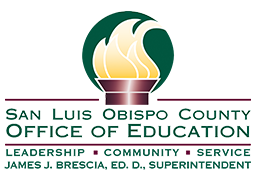English Language Learners Terminology
-
- BCLAD:
- Bilingual Cross-cultural Language and Academic Development
The BCLAD credential requires the same academic preparation as CLAD, as well as both written and oral fluency in a second language. BCLAD qualifies the holder to teach in a foreign language, as well as in any setting that requires the CLAD. - BICS:
- Basic Interpersonal Communication Skills
Everyday conversational ability; the first level of language proficiency acquired by an English learner. - Bilingual Education:
- A basic tenet of bilingual education is that students are provided content area instruction in their native language. The objective of such instruction is to develop cognitive academic language proficiency (CALP) and provide access to core curriculum in the language in which the students already have fluency. This enables students to develop the academic foundation necessary to participate in Specialty Designed Academic Instruction in English (SDAIE) and ultimately in mainstream English curriculum. English Language Development (ELD) is an integral component of any bilingual program. Research has indicated that bilingual programs, when done well, ensure optimal opportunity for English language development and academic success.
Bilingual Education is usually a misnomer in secondary school settings in that in a truly bilingual classroom the students would include both native speakers of English and students who are fluent in a non-English language. In secondary schools, “bilingual” classrooms are usually comprised exclusively of students who are developing English as a second language. Content instruction tends to be delivered exclusively in the non-English language. - Bilingual:
- A person who understands and speaks two languages.
- CALP:
- Cognitive Academic Language Proficient
Acquisition of language skills are not outwardly apparent in everyday conversation such as skills in making inferences, debating, rationalizing, etc. - CELDT:
- California English Language Development Test
A test mandated by the state of California to be given to all English learners in order to determine the English Language Development Level (ELD) of the student. The ELD levels are as follows:- Level 1: Beginning
- Level 2: Early Intermediate
- Level 3: Intermediate
- Level 4: Early Advanced
- Level 5: Advanced
- CLAD:
- Cross-cultural Language and Academic Development
The CLAD is a supplementary credential which is tagged on to a person’s existing credential, allowing the person to:- Provide ELD to students for which the main credential authorizes the teaching of, and
- Provide SDAIE to students in the curricular subjects for which the main credential authorized the teaching of.
- Comprehensible Input:
- SDAIE content instruction provided to ensure that the English learner comprehends the lesson.
- CTEL:
- California Teacher of English Learners® (CTEL®) ExaminationCalifornia Education Code Sections 44253.3 and 44253.4 require the Commission on Teacher Credentialing (CTC) to issue certificates that authorize the holder to provide specialized instruction to English Learners (EL). These certificates are the Cross-cultural, Language and Academic Development (CLAD™) Certificate and the Bilingual, Cross-cultural, Language and Academic Development (BCLAD™) Certificate.Section 44253.5 requires the CTC to develop and administer examinations on which a teacher can demonstrate competence in the knowledge and skill areas necessary for effective teaching of English Learners (EL). With expert advice from California educators and others, the CTC has developed the California Teacher of English Learners® (CTEL®) Examination for the purpose.
- DELAC:
- District English Learner Advisory Committee
See ELAC. - Dual Iceberg Theory:
- The belief that a person who is bilingual maintains one common pool of knowledge in their brain (the base of the iceberg). They can then express that knowledge in either of two languages (the two tips of the iceberg).
- EL:
- English Learner
- ELAC:
- English Learner Advisory Committee
An advisory committee comprised of the parents of the English learner students at the site, as well as school personnel. - ELD:
- English Language Development
The purpose of ELD is to teach English vocabulary, functions, forms, and structure. The language of the instructor is English. ELD levels include:- Level 1: Beginning
- Level 2: Early Intermediate
- Level 3: Intermediate
- Level 4: Early Advanced
- Level 5: Advanced
English Language Development (ELD) was formerly referred to as English as a Second Language (ESL). ELD is instruction in the target language, English, which is not the home language of the students. Research has shown that through providing students with comprehensible input in a comfortable setting encourages two-way interaction and language acquisition occurs. ELD classes focus on language development and are not designed to teach content. Content ELD does not equal SDAIE.
- ELL: English Language Learner
- ESL:
- English as a Second Language (now referred to as ELD)
Instruction in English that is specifically designed to meet the needs of non-native speakers of English in learning the English language. - FEP:
- Fluent English Proficient
A designation that indicates that a student is fluent in the areas of listening, speaking, reading, and writing in the English language. - LEP:
- Limited English Proficient
- NEP:
- Non-English Proficient
A designation that indicates that the student is not proficient in English in one or more of the following areas: listening, speaking, reading and writing. This term is no longer used. - Language Acquisition:
- Process of “picking up” a language similar to the way children develop first language competence. Language is acquired by the desire to use and communicate it. This differs from the teaching of language through conscious awareness of its rules.
- Language Proficiency:
- Language ability that encompasses ‘BICS’ and ‘CALPS’ in listening, speaking, reading, and writing. The everyday conversation ability and the academic proficiency.
- PLI:
- Primary Language Instruction
Instruction of curriculum given via the student’s native language. - SDAIE:
- Specially Designed Academic Instruction in English
Specially Designed Academic Instruction in English (SDAIE) was formerly referred to as sheltered instruction. It is contextualized instruction in the content areas delivered in the target language, English. The primary objective of SDAIE is concept development in the core curriculum; subject matter standards are addressed. Teachers understand language acquisition and design lessons that consider the special linguistic and cultural backgrounds of the students. Cognitive academic language proficiency is further developed in English. Optimally, students placed in SDAIE content classes have literacy skills in their primary language and have achieved intermediate fluency in English.
Teaching curriculum content so it is comprehensible to those students for whom English is not their primary language by using a variety of strategies including the following examples:- Simplifying the input (slower speech rate; clear enunciation; controlled vocabulary/idioms; controlled sentence length/complexity)
- Adding contextual clues (kinesics: gestures, facial expressions, acting out meaning, and concrete referents: props, realia, visuals)
- Promoting communicative interaction (clarification requests, repetitions, expansion)
- Regarding reading
- focus on form (preview structures and vocabulary; simplify the reading material).
- Focus on content/meaning (discuss pictures; discuss the context format; set up questions or predictions)
- Enhance lessons (do not correct structural errors; model correct forms; focus on topics or notions not structures; focus on meaning, not grammar; emphasize receptive vocabulary rather than productive vocabulary in the initial stages)
- Use the (L1) primary language to support English achievement (promote individual projects in L1; allow students to use L1 in class; have parents use L1 at home in reading, writing, and explaining)
- Improve student status (promote equal status group activities and cooperative learning; observe students as individuals by recognizing their learning strengths and interaction patterns, then build upon those insights to create a classroom environment that supports success for all students).
- Use graphic organizers.
- Assess prior knowledge.
- Use cooperative learning strategies.
- Use hand-on activities.
View a chart to modify lessons for SDAIE.
- TPR: Total Physical Response is utilized in the beginning of English instruction given to a NEP student where the responses are given in a nonverbal manner. The lessons usually involve following commands and use a great deal of body language.
Contact
- San Luis Obispo County Office of Education
- Office of James J. Brescia, Ed.D.
- 3350 Education Drive
- San Luis Obispo, CA 93405
- Tel: 805-543-7732
- Contact SLOCOE
- Contact Webmaster

